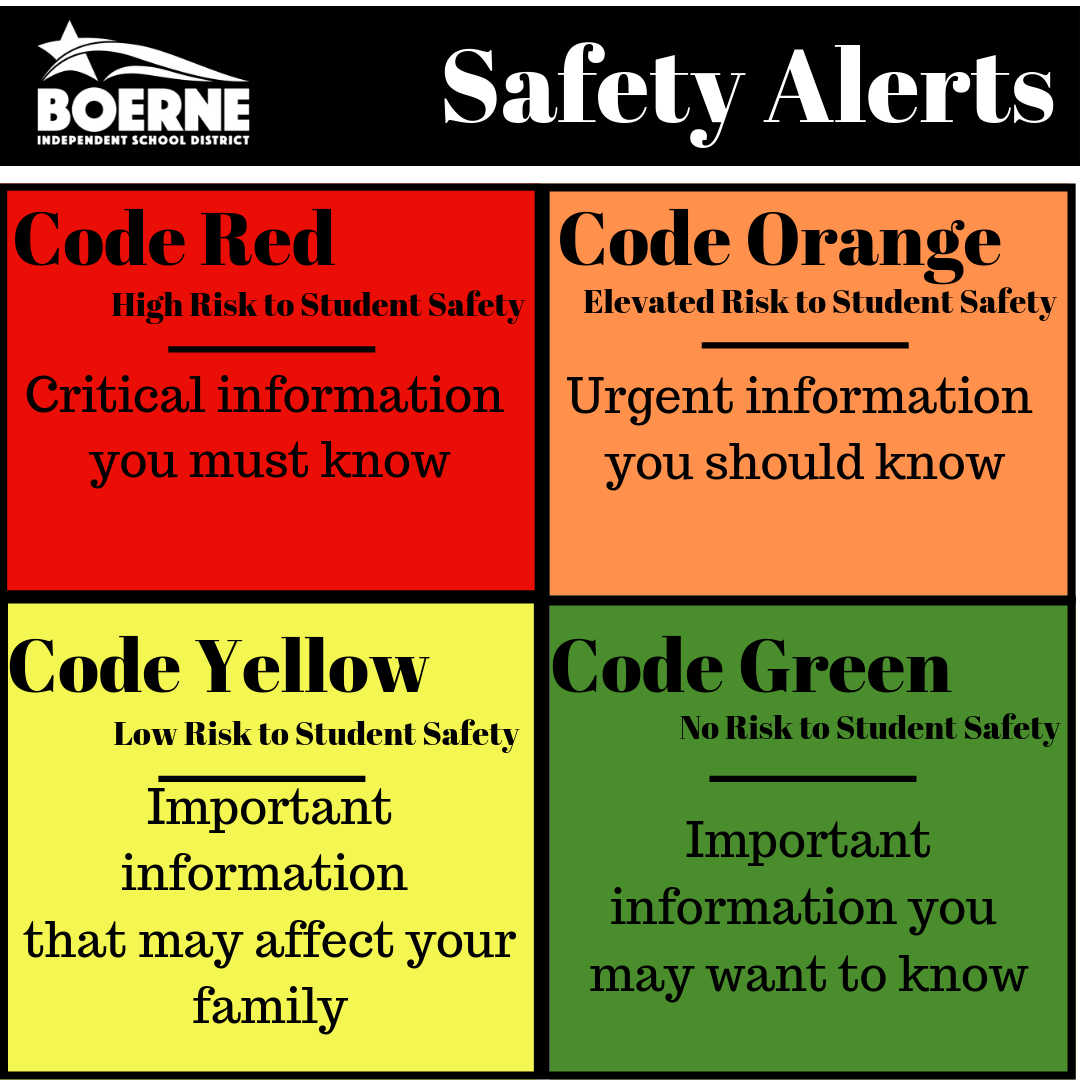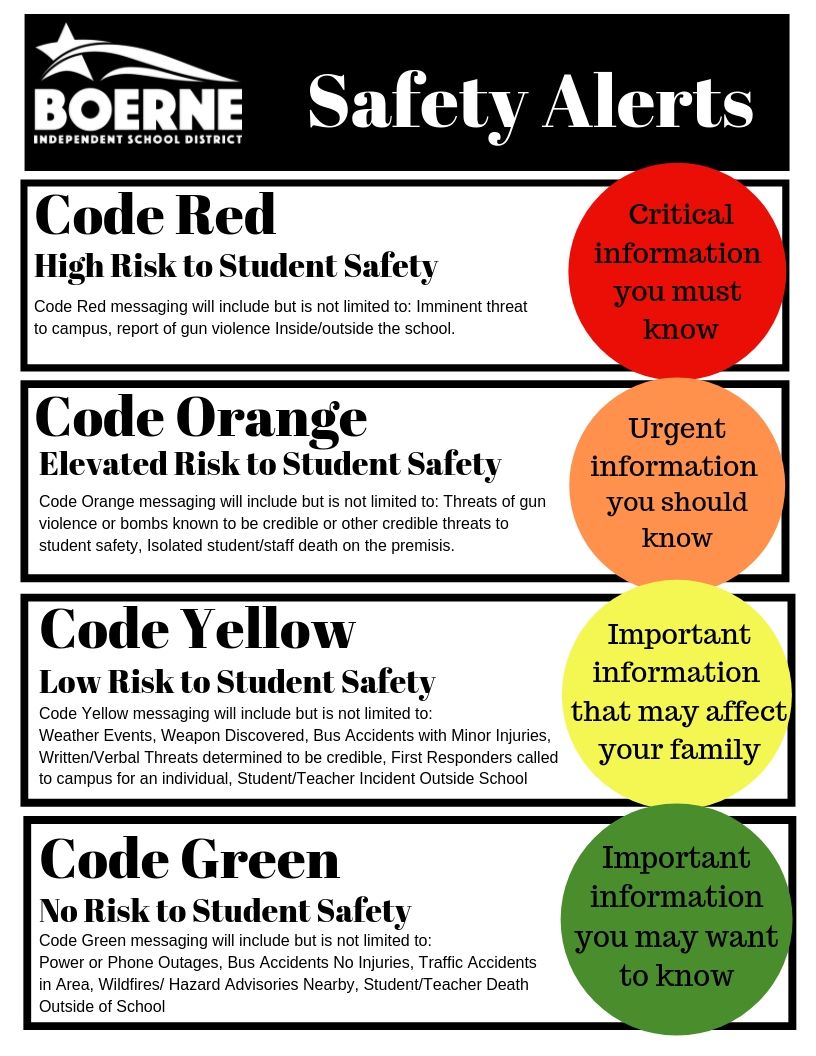- Boerne Independent School District
- Homepage
Boerne Independent School District Unveils New Safety and Security Measures Ahead of 2019-2020 School Year
Boerne Independent School District personnel have been working to implement updates to security at the district ahead of the first day of the 2019-2020 school year, Wednesday, August 14.
 The updates include the following: a new Public Service Announcement on the district’s ‘See Something, Say Something’ anonymous reporting tool, the introduction of Emergency Communication Codes, the addition of the RAPTOR background checking system, additional security cameras on campuses, secure campus vestibules, student identification badges for high school students and two additional School Resource Officers.
The updates include the following: a new Public Service Announcement on the district’s ‘See Something, Say Something’ anonymous reporting tool, the introduction of Emergency Communication Codes, the addition of the RAPTOR background checking system, additional security cameras on campuses, secure campus vestibules, student identification badges for high school students and two additional School Resource Officers.
‘See Something, Say Something’ has been a successful preventative tool for district safety, and was in response to parent’s requests for such a resource. The application allows anonymous reporting using an icon at the top of every BISD webpage. The district made a PSA this summer to help spread awareness of the available tool. Prevention is the district’s top priority when it comes to safety and security. You can learn more about ‘See Something, Say Something’ by watching the PSA here.
“These improvements have been a long time in the making,” said BISD’s Safety and Security Coordinator Hector Hernandez. The longtime Boerne Police Officer joined the district full-time as Safety and Security Coordinator in August of 2018. “We started assessing things that could be improved as soon as I was brought on,” said Hernandez.
 Additional cameras and security vestibules at every BISD campus were funded with money from the district’s 2016 bond. The additional improvements were made through hard work overtime.
Additional cameras and security vestibules at every BISD campus were funded with money from the district’s 2016 bond. The additional improvements were made through hard work overtime.
The district’s new Emergency Communication Codes were made in collaboration with Officer Hernandez’s department and the district’s Communications Department and are a way for the district to communicate quickly and efficiently to parents, guardians, and staff.
The alerts help prioritize emergency communication using an intuitive color-coding with Red, being the highest priority alert, Orange second, Yellow third and Green being the lowest priority alert.
“These are scenarios we hope remain hypothetical, but we want all the tools available if we need them,” said Officer Hernandez. “Our community, staff, and parents need to be informed.”

